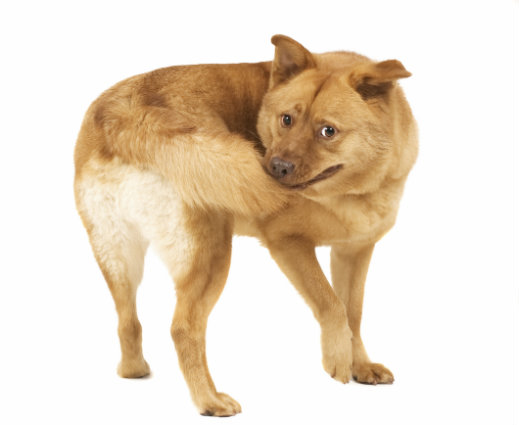Dog Behavior: Why Do Dogs Chase Their Tails?
Posted on September 9, 2013 by Joy of Living No comments

For a puppy, chasing his tail is as common as a child spinning in circles. Puppies seem to become aware that they have tails and, therefore, they are something to try to catch. Who hasn’t had a laugh at a puppy spinning around trying to catch his own tail?
Many dogs continue this behavior as they get older. It may be a sign that your dog is bored and is looking for some way to entertain himself. Try providing your dog with lots of fun toys and safe things to chew on so he will have some other options.
Some dogs continue to chase their tails after they are adults because it amuses their owners. They have learned that chasing their tail gets them attention and causes their owners to laugh and give them affection, so they chase their tails to get this positive attention. If you want your dog to stop chasing his tail, stop giving him the positive feedback. Encourage him to do something else like play with some toys, for instance. Throw a ball for him. Play frisbee with him.
Some dogs may chase their tail if there is some kind of physical problem concerning their tail. In these cases it only looks the same as a dog who is chasing his tail for fun. For example, your dog may have a flea bite at the base of his tail and it may be driving him crazy. He may spin, trying to reach the place that’s itching, but he can’t reach it. So, it looks like he’s chasing his tail. You can help your dog by checking to see what’s bothering him. This kind of spinning and chasing actually does look different from tail chasing. With tail-chasing a dog is trying to catch the tip of his tail (usually). When there is a physical problem a dog is often trying to reach the base of his tail or his body. Try to notice the difference and see what’s bothering your dog so you can help him.
Impacted anal sacs or problems with worms can also cause dogs to chase their tails.
Tail-chasing can also occur after physical trauma, surgery or illness. Bull Terriers and German Shepherds seem to be more prone to tail-chasing than other breeds.
In some cases, tail-chasing can become a compulsion as in an obsessive compulsive behavior. There is some evidence to suggest that this OCD tail-chasing behavior may be linked to high cholesterol in the diet.
Dogs with anxiety problems may also engage in compulsive tail-chasing. About two percent of the canine population is estimated to have canine compulsive disorder.
If your dog develops compulsive tail-chasing behavior, check with your veterinarian.

Comments